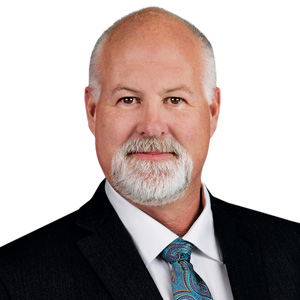Strategies to account for inflation
PMP Staff May 4, 2022

PHOTO: RRRAUM/ISTOCK / GETTY IMAGES PLUS/GETTY IMAGES
We asked Pest Management Professional’s columnists and editorial advisory board members to share tips for strategies to account for inflation. Here are some of the experts’ responses from our May 2022 print edition.
Please take a minute to answer our latest one-question poll on this topic and let us know how you promote disinfecting and sanitizing services: Reader poll: What strategies are you using to account for inflation?
PMP’s Editorial Advisory Board and Regular Contributors
Greg Baumann: “Work smarter to avoid price increases. Evaluate your routing, and make sure you are getting the most efficient use of your vehicles. For any application of a product, conduct a quality check to make sure the right amount is being applied and not overused. Finally, maintain equipment so technician time is spent on production and not repairs.”

Judy Black
Judy Black, BCE: “We continue to ensure routes are as tight geographically as possible to save on gasoline costs.”
Dan Gordon, CPA: “Raise prices at least 10 percent.”
Jerry Schappert, ACE: “I am offering two-for-one sales coupons and taking charge of things like forgotten recurring expenses that I can do without. If the dollar is not worth as much as it once was, it’s time to stretch it as far as I can.”
Pete Schopen: “We raised our basic quarterly services by 5 percent across the board. We also raised our initial service pricing for larger homes — 4,000 square feet and up — by 10 percent. Like everyone else, we are attempting to cut down our drive times and overtime. For our supervisors, we are getting away from trucks and going with smaller, gas-efficient cars with hatchbacks. Instead of 50-gallon sprayer tanks, we are going with backpack sprayers.”
Mark Sheperdigian, BCE: “We’re raising our prices. It solves many problems, as it counters rising costs, provides an incentive for our current technicians, provides a more attractive pay rate for hiring new techs, and encourages low-priced/low-profit accounts to leave.”
Dr. Hamilton Allen: “Some inflation impacts are unavoidable, but we’re placing a heavy focus on our table stakes and core business to remain profitable. For example, a greater emphasis is being placed on inventory management while maintaining essential long-term business relationships. Ultimately, it’s not a great idea to fall into false economy behaviors.”

Michael Broder, BHB Pest Elimination
Michael Broder: “It seems like these unexpected challenges never end. Like most other companies, we have had to raise our rates at a much higher percentage than we ever did in the past. Plus, we utilize our service software programs to optimize our route scheduling. This helps us fit more jobs in a day’s route and also travel less to help with increased gas costs.”
Doug Foster: “Inflation is making me implement strategies that we all have, but don’t keep top of mind: raising prices, giving raises and bonuses to employees, and being more efficient in our business by buying in bulk, taking advantage of sales and tightening service routes.”
Dr. Faith Oi: “Inflation is complex. Not every category of expense has increased for us. We have been looking at places where we can cut costs so as not to significantly increase prices for our students without compromising the quality of our program.”
Eric Scherzinger: “We are raising prices. Look around and everything is going up; you are missing an opportunity if you don’t raise your prices. I heard from someone, ‘if you aren’t raising your prices right now, it is showing that you were overcharging to begin with and you can absorb the increase of all the expenses everyone is getting hit with.’”
Desiree Straubinger: “We are keeping a close eye on all spend across the company. This includes focusing on training our specialists to use products properly to avoid waste and unnecessary spending. Where it makes sense, we have worked on adjusting our customers’ prices based on the cost of services provided. We are working on re-routing our teams to make sure each specialist’s route is well-defined and takes advantage of synergies between acquired companies. This is extremely important with the cost of fuel rising. If we are overlapping routes, it’s extra windshield time that could be spent servicing our customers, rather than driving.”
Dan Baldwin, BCE, CCFS, CP-FS: “The question really has to be split in two: What am I doing to keep up with normal inflation, and What am I doing to combat extraordinary (world event) inflation?

Dan Baldwin, BCE, CCFS, CP-FS
For normal inflation, a business should have a realistic expectation of its profit margins. That should allow for the regular, ordinary price increase to maintain exactly that level of profit. Generally speaking, the population as a whole understands the annual inflation rate. If your prices go up accordingly, there’s typically not a lot of pushback. If people know that prices have gone up 3 percent in general and you offer a 3 percent price increase, it will not strike anybody as being out of line.
Another way to approach it, though, would be to look at organizational efficiency to try to identify sustainable cost savings that can hold your costs down, or reduce your costs, giving you an advantage in the marketplace.
However, if you offer a ‘price increase’ to accommodate rapidly changing energy and materials costs due to an extraordinary event, clients may balk. Once prices go up, they don’t come down, and people know that. But the same clients who understand annual inflation are aware of changing economic conditions. Therefore, the cleanest way to accommodate a (hopefully) short-term jump in costs is a clearly identifiable surcharge that reflects the actual incurred cost increase.
The amount of the surcharge should be relatively easy to compute and should be based on maintaining your desired profit margin. For example, and I’m totally making these numbers up, if it costs you on average $200 a month in fuel to service 150 accounts and it now costs $500, your increase is $300/150, or $2 per account, plus your required profit on expenses. If material costs spike due to the same event(s), you calculate the cost increase per average service and perform the same calculation.
Inform your clients that due to current conditions — pandemic, war in Europe, energy shortages, etc. — there will be a $5 surcharge (again, this is a made-up number) until conditions normalize.
By identifying it as a surcharge and giving the reasons for it, people can understand it, and it won’t seem like their prices are going up with no end in sight. If the ‘new normal’ is higher, then you can accommodate it in your pricing going forward. The surcharge doesn’t seem to hit people the same way; ‘Oh my gosh, the prices are just skyrocketing!’ It’s a short-term change, hopefully, to which people can understand and relate.”
Leave A Comment